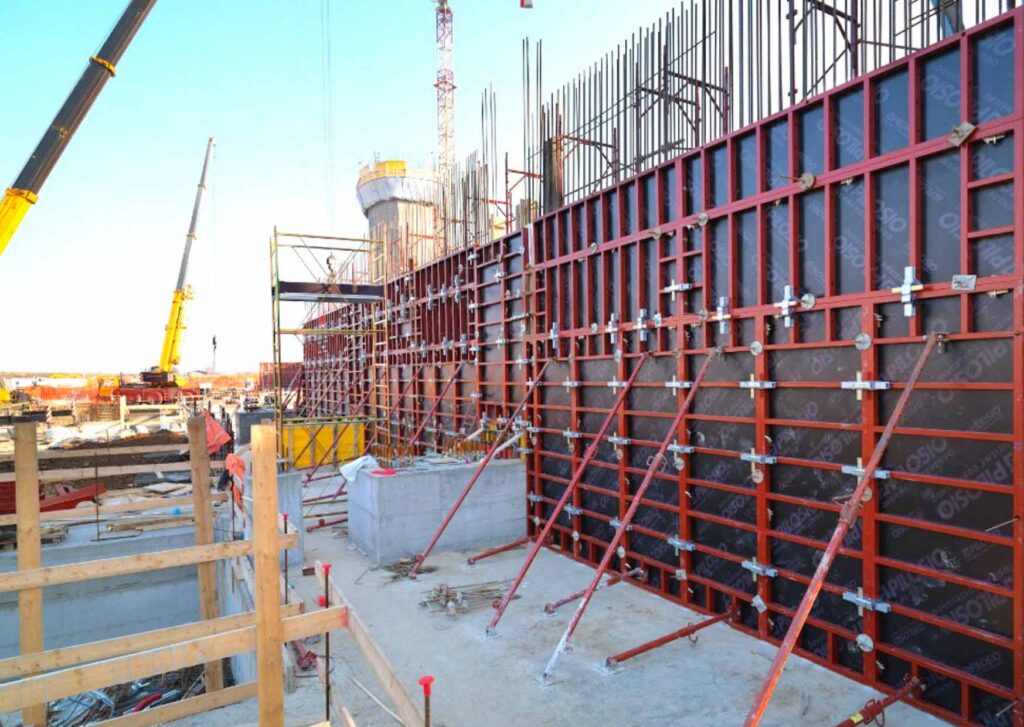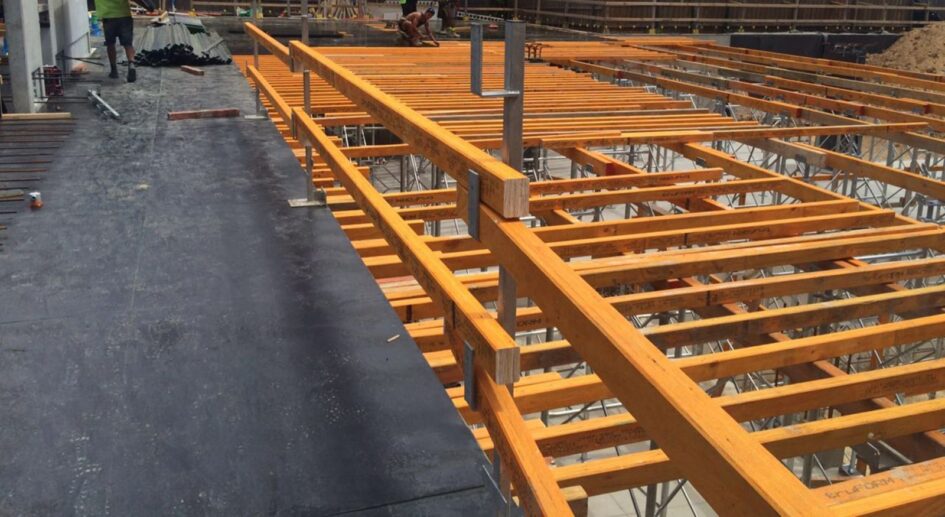LVL (Laminated Veneer Lumber) formwork is an essential component in modern construction projects. It provides structural support and serves as a mold for concrete during the construction process. Understanding the basics of LVL formwork, its components, benefits, installation process, and safety measures is crucial for builders to ensure the success of their projects. This article aims to provide a comprehensive guide on LVL formwork, equipping builders with the knowledge they need to make informed decisions in their construction processes.
Understanding LVL Formwork
Before delving into the intricacies of LVL formwork, it is important to understand its definition and basics. LVL formwork refers to a temporary structure made primarily of laminated veneer lumber. It is designed to support and shape the concrete until it hardens and gains enough strength to bear load. LVL formwork is widely used in various construction applications, including residential, commercial, and industrial projects. Its versatility and efficiency contribute to its popularity in the construction industry.
Moreover, the importance of LVL formwork cannot be overstated. It plays a significant role in ensuring the structural integrity and quality of buildings. By providing a sturdy framework, LVL formwork prevents concrete from shifting or deforming during the pouring and curing process. It is crucial for maintaining precise dimensions and shapes as per architectural and engineering designs. Additionally, LVL formwork helps in achieving a smooth finish on concrete surfaces, enhancing the aesthetic appeal of the finished structure.

One key advantage of LVL formwork is its reusability. Unlike traditional formwork materials like timber, which may need to be replaced after a few uses, LVL formwork can withstand multiple cycles of pouring and curing concrete. This durability not only reduces the overall cost of construction but also minimizes waste generated from disposable formwork materials.
Furthermore, LVL formwork offers excellent load-bearing capacity, making it suitable for supporting heavy concrete loads without compromising safety. Its high strength-to-weight ratio allows for easier handling and installation on construction sites, improving efficiency and productivity. The dimensional stability of LVL formwork also ensures consistent results in terms of shape and alignment, leading to precise and accurate concrete structures. You can visit https://experiencewoodworking.com/professional-services-of-formwork-companies-in-sydney/ to get more about professional services of formwork companies in Sydney.
Components of LVL Formwork
LVL formwork consists of various components that work together to achieve its intended purpose. Understanding these components is vital for builders to effectively utilize LVL formwork in their projects.
But let’s dive deeper into the world of LVL formwork and explore some additional details that make it such a remarkable construction technique.
Material Composition
The primary material used in LVL formwork is laminated veneer lumber, which is a type of engineered wood product. It is composed of thin layers of wood veneers glued together using adhesives. This construction gives LVL formwork its exceptional strength and durability, making it capable of withstanding heavy loads during the concrete pouring process.
But did you know that the selection of the wood veneers is a meticulous process? Only the finest quality veneers are chosen, ensuring that the resulting LVL formwork is of the highest standard. These veneers are carefully sourced from sustainably managed forests, promoting environmental responsibility in construction practices.
In addition to wood veneers, other materials such as steel formwork connectors, wedges, and nails are also used to assemble and secure LVL formwork components. These materials contribute to the stability and reliability of the formwork structure. The connectors, for example, play a crucial role in maintaining the integrity of the formwork system, ensuring that each component is securely connected, allowing for a seamless construction process.
Design and Structure
The design and structure of LVL formwork are crucial factors that determine its effectiveness and efficiency in construction projects. The design considerations include the size and dimensions of the formwork, as well as the arrangement and spacing of its components. These factors need to be carefully planned to withstand the pressure exerted by the wet concrete and ensure proper alignment and support during the curing process.
But what goes into designing the perfect LVL formwork? It involves a meticulous analysis of the project requirements, taking into account factors such as the load-bearing capacity, the desired surface finish, and the overall structural integrity. Each formwork design is tailored to the specific needs of the project, ensuring that it meets the highest standards of safety and performance.
The structure of LVL formwork typically consists of vertical members, horizontal beams, and diagonal bracing. The vertical members, known as soldiers, provide the primary support for the formwork system. Horizontal beams, called wales, are attached to the soldiers and serve as additional supports. These components work in tandem to create a rigid framework capable of withstanding the lateral forces exerted by wet concrete.
But it doesn’t stop there. The design of the formwork system also takes into consideration the ease of assembly and disassembly. This allows for efficient construction processes, reducing both time and labor costs. The carefully thought-out structure ensures that the formwork can be easily adjusted and reused for different projects, promoting sustainability in the construction industry.
So, as you can see, LVL formwork is not just a simple combination of materials and components. It is a sophisticated construction technique that combines the strength of laminated veneer lumber with meticulous design and structural considerations. By understanding these additional details, builders can fully harness the potential of LVL formwork, creating structures that are not only strong and durable but also efficient and sustainable.

Benefits of Using LVL Formwork
Builders can enjoy several benefits by utilizing LVL formwork in their construction projects. These advantages contribute to increased efficiency and improved outcomes.
Durability and Strength
LVL formwork offers exceptional durability and strength compared to other formwork options. Its composition of laminated veneer lumber provides high load-carrying capacity and resistance to bending and warping. This durability allows LVL formwork to withstand the rigorous demands of the construction process, saving builders both time and money by reducing the need for frequent replacements.
Additionally, the strength of LVL formwork makes it ideal for supporting heavy concrete loads during the pouring and setting process. This reliability ensures that the formwork maintains its shape and stability, preventing any structural failures that could compromise the integrity of the construction project.
Efficiency and Flexibility
LVL formwork is known for its ease of use and adaptability to different project requirements. It can be easily modified, cut, and assembled to fit various shapes and sizes, enabling builders to create customized formwork solutions. Moreover, LVL formwork’s lightweight nature makes it easier to handle and transport, improving overall construction efficiency.
Furthermore, the flexibility of LVL formwork extends to its reusability, allowing builders to utilize the formwork for multiple projects. This cost-effective feature not only reduces waste but also provides long-term value for construction companies looking to optimize their resources and investments.
Installation Process of LVL Formwork
The installation process of LVL formwork involves several considerations and steps that builders need to follow for a successful construction project. Let’s delve into the details and explore the intricacies of each stage.
Pre-Installation Considerations
Prior to installation, builders must carefully evaluate the project requirements and determine the appropriate LVL formwork system. This decision is crucial as it directly impacts the structural integrity and overall efficiency of the construction process. Factors such as formwork design, load-bearing capacity, and construction timeline should be taken into account during this preparatory phase.
Additionally, a thorough understanding of the site conditions and environmental factors is crucial to ensure the safety and stability of the formwork structure. Factors such as soil composition, weather patterns, and proximity to nearby structures should be carefully assessed to mitigate any potential risks or challenges that may arise during the installation process.
Builders should also acquire the necessary permits and clearances from relevant authorities before commencing the installation process. Adhering to local regulations and industry standards is essential to avoid any legal issues or safety hazards. This step ensures that the construction project proceeds smoothly, without any unnecessary delays or complications.
Step-by-Step Installation Guide
The installation of LVL formwork involves several sequential steps that builders should follow diligently. These steps ensure the proper assembly and alignment of the formwork system:
- Prepare the foundation: Clear the construction site and lay out the foundation according to the project design. This step involves meticulous planning and precision to ensure that the foundation is level, stable, and capable of supporting the formwork system.
- Position and secure soldiers: Install vertical soldiers at predetermined intervals, ensuring proper alignment and stability. These soldiers act as the backbone of the formwork structure, providing vertical support and load-bearing capacity. It is crucial to secure them firmly to the foundation using suitable connectors or anchoring systems to ensure the overall stability of the formwork system.
- Attach wales: Place horizontal wales at the desired height and secure them to the soldiers using connectors or nails. These wales provide lateral support to the formwork structure, ensuring its rigidity and stability. It is essential to ensure proper spacing and alignment of the wales to maintain the structural integrity of the formwork system.
- Install diagonal bracing: Add diagonal bracing components to reinforce the formwork structure and enhance its rigidity. These braces prevent lateral movements during the concrete pouring process, ensuring that the formwork remains stable and secure. Proper installation and alignment of the diagonal bracing components are crucial to maintain the structural integrity of the formwork system.
- Inspect and adjust: Thoroughly inspect the entire formwork structure for any defects or misalignments. This step is crucial to identify any potential issues that may compromise the formwork’s stability or integrity. If any defects or misalignments are found, necessary adjustments should be made to ensure the proper formwork integrity before proceeding to the concrete pouring phase.
By following these step-by-step instructions diligently, builders can ensure a successful installation of LVL formwork. This meticulous approach not only enhances the overall efficiency of the construction process but also ensures the safety and stability of the formwork structure. With a solid foundation and a well-constructed formwork system, builders can proceed with confidence to the next phase of the construction project.
Safety Measures and Precautions
Ensuring the safety of workers and maintaining a secure construction environment is paramount when working with LVL formwork. Implementing the following safety measures and precautions is crucial for a successful and incident-free construction process.
Handling and Storage
Proper handling and storage of LVL formwork components are essential to prevent damage and ensure their effectiveness. Builders should instruct workers on appropriate lifting techniques to avoid strains or injuries. Stacking and storing formwork components in a designated area, away from moisture and other potentially damaging elements, helps prolong their lifespan and maintain their structural integrity.
On-Site Safety Practices
Builders must enforce on-site safety practices to protect workers and prevent accidents. This includes providing appropriate personal protective equipment (PPE), such as helmets, gloves, and safety harnesses. Regular inspections of the formwork system should also be conducted to identify any signs of wear, damage, or instability. Adequate signage and barriers should be installed to clearly indicate areas with potential hazards or restricted access.
Additionally, builders should ensure that workers receive appropriate training on LVL formwork installation and safety procedures. This knowledge equips them with the necessary skills to identify and address potential safety risks on the construction site.
Conclusion
In conclusion, LVL formwork is a vital tool in modern construction projects. Its understanding, proper utilization, and adherence to safety measures are crucial for builders to achieve successful outcomes. By following the installation process and implementing the recommended safety precautions, builders can maximize the benefits of LVL formwork, ensuring the structural integrity, efficiency, and safety of their construction projects. As the construction industry continues to evolve, builders should stay abreast of advancements and innovations in LVL formwork to leverage its full potential and enhance their construction processes.

Leave a Reply